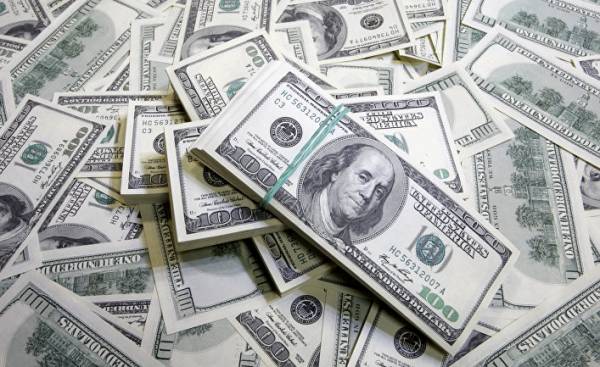
The American economist Carmen Reinhart indicates a problem posed by the dominant position of the dollar as a reserve currency, and suggests a possible solution from China.
Since the end of world war II, the U.S. share of world GDP fell from 30% to 18%. A similar trend was observed in other economies. At the same time, the share of China increased almost four times up to 16% mark (now he is second only to the USA) and emerging markets accounts for 40% to 60%. Anyway, these balance changes are not reflected in the global Finance.
The Bretton Woods agreement of 1944 fixed the dollar as the main global reserve currency, and until the 1970s, years about two thirds of the world’s GDP was tied to green notes. The rest came mainly from the British pound and the Soviet ruble. In our recent work with Seckin Ethan (Ethan Ilzetzki) and Kenneth Rogoff (Kenneth Rogoff), we found that the American dollar by a wide margin maintains the position of the dominant reserve currency.
It are based on 60% of the countries, which account for 70% of global GDP. This is also facilitated by other factors, for example, the volume of trade transactions in dollars and the share of us assets (particularly bonds) in the reserves of Central banks.
Stuck Euro
The Euro is far behind. Since the early 1980s, years before the introduction of the single currency in 1999, the influence of the German mark increased in Western Europe and later in the East. Anyway, promotion of the Euro, which crossed the area of the German mark and the French franc (in Africa), stood at a standstill with the reduction of the share of Europe in world production. And no other world currency is not trying to join the fight for leadership in the world.
This discrepancy between the production trends and the world’s finances due to the fact that the American economy, despite the decline in share, provides the global demand for reserve assets, which is particularly growing in emerging markets. And this is not a new trend not to call. The reconstruction of Europe and the expansion of international trade after 1945 led to increased demand for reserves in the 1950’s to the early 1970-ies. At that time the dollar was guaranteed by gold reserves. And once the market supply of gold lagged behind the demand, the difference is offset by the American currency.
Over time a growing share of the paper dollar against gold has become incompatible with the preservation of the parity between gold and the dollar. Two devaluations against gold in December 1971 and February 1973 was not enough to compensate for the overvaluation of currency. The end of the Bretton woods system came in March 1973 when the dollar (and other major currencies) has moved to a floating exchange rate and continued devaluation.
The United States managed to meet the demand of the rest of the world in dollars only by issuing more bonds. This has led to long-term current account deficits and budget. But once the peg to gold went out of fashion, budget goal to reduce the increasing debt of the United States was contrary to their unique international role of the supplier of the reserve currency.
The decision from China?
Anyway, China is in a comfortable position for the solution of new problems. The inevitable deficit reduction in the United States (when it happens) can lead to devaluation of dollar as in 1970-ies, which would entail a capital loss of China and other major holders of us bonds.
But China may become a new supplier of reserve assets. In such a scenario, supply would be primarily focused on regions with rapid economic growth. Either directly, if the yuan will gain reserve currency status, or indirectly, if the special drawing rights of the IMF will become a favorite tool of reservists (the yuan is now included in the SDR basket).
But there is a third option: global demand for U.S. reserve assets can fall. Stable release of Chinese capital is already prompting significant decline in demand for us bonds. China would eventually move to a floating exchange rate with a deeper domestic financial market and to pay less attention to the preservation of impressive foreign exchange reserves.







